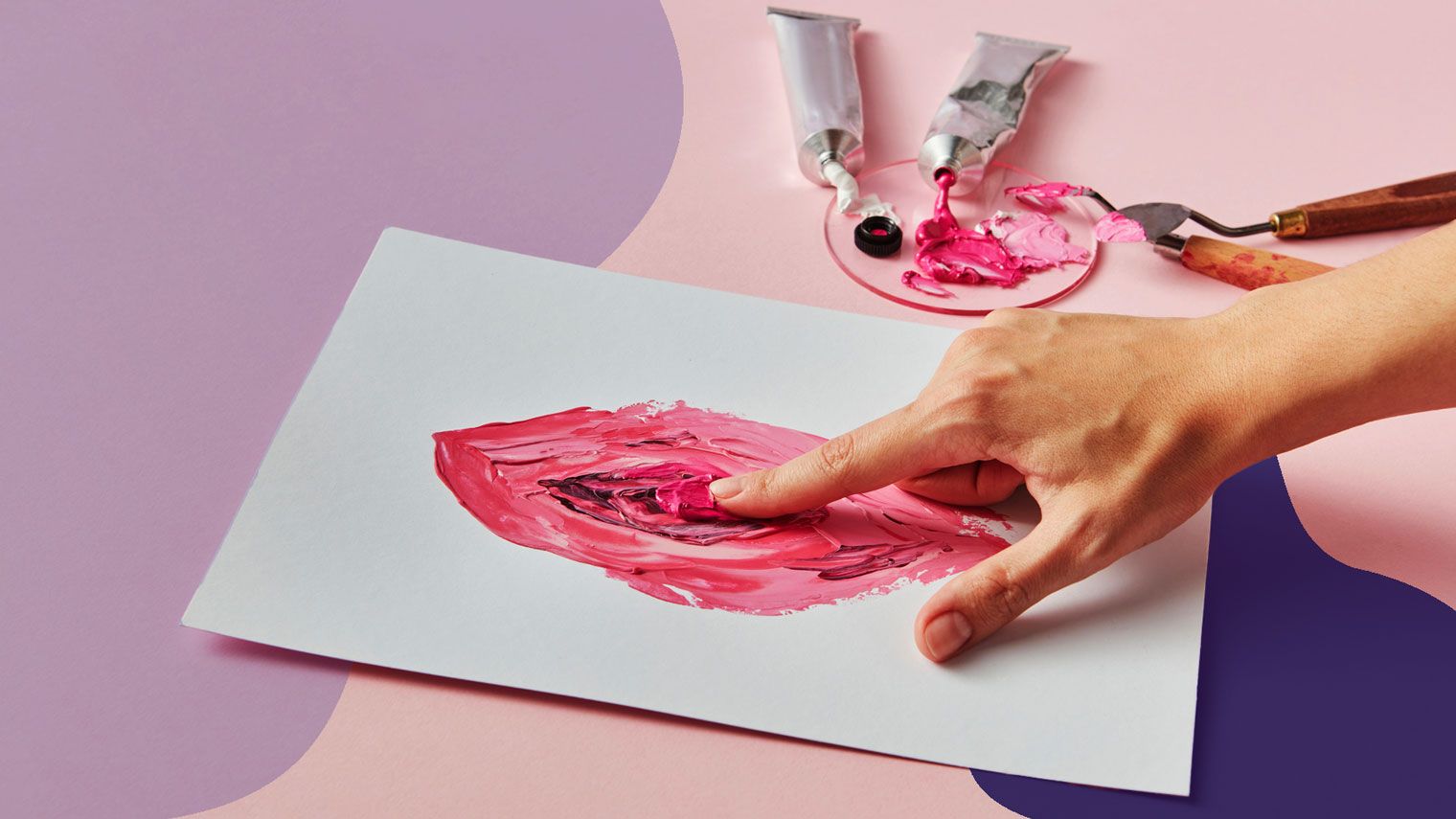I Use Orgasms to Manage My IBD Pain
May 06, 2024
Content created for the Bezzy community and sponsored by our partners. Learn More

Photography by Yaroslav Danylchenko/Stocksy United
Once I discovered the power of climaxing, I was able to kick my dependence on opioids for pain relief.
Chronic pain has cast its shadow over my life for more than 15 years, undermining my ability to function.
I have multiple chronic conditions that cause this pain, including ulcerative colitis, a form of inflammatory bowel disease (IBD).
But my first bout with searing nerve pain began at age 14, thanks to fibromyalgia.
However, it took doctors 7 years to diagnose fibromyalgia, 10 years to identify my IBD symptoms, and 13 years to treat and diagnose endometriosis.
In the interim, they prescribed opioids to manage my pain. Within months, I had a codeine dependence.
It was another 7 years before I stumbled on a magic discovery: Orgasms manage my chronic pain better than any pill.


The slippery slope into dependence
Since its birth in my body, chronic pain has led me in an agonizing dance that swings between flare-ups, remission, and re-triggered pain. Reprieve felt like an impossible fantasy, especially before diagnosis.
So, when my primary care physician first offered that prescription for codeine to manage the pain until a diagnosis could provide more insight, I leaped at it.
I popped those pills like they were party favors. At first, each pill gave me a taste of freedom, just enough of a reduction in pain to function at half-capacity. After months of agony, it felt like breathing fresh air for the first time.
I swiftly developed a dependence. For the next 7 years, until I finished college at age 21, I embraced what felt like a burgeoning addiction because it felt like the safest solution to the mind-altering pain I experienced daily.
Side effects and searching for solutions
In the last few years of my opioid use, however, the side effects started to overwhelm the benefits of taking them. I became severely apathetic, developed issues with short-term memory, and experienced mood swings.
Most significantly, I began to feel more pain. This phenomenon is called opioid-induced hyperalgesia. It’s believed to occur in more than 5% of people with chronic pain. It causes people to become increasingly sensitive to painful stimuli.
I knew the pills had to go, but they were like a comforting teddy bear on my bedside table, a habitual placebo that promised momentary relief. However, it was time to throw away the toys and grow up.
I used the pills until they ran out; then I went cold turkey.
The withdrawal was brutal. I experienced sweating, shakes, muscle aches, irritability, and exhaustion.
Using cannabis eased the transition, helping me manage the worst of my IBD symptoms, particularly the loss of appetite and pain after eating.
Discovering the power of orgasms
Cannabis became my saving grace, allowing me to function somewhat normally alongside treatment from my specialists. Finally armed with a couple of diagnoses — fibromyalgia and IBD — I felt like life could be survivable again.
Except, there was still one flaw: pain continued to interfere with my daily life, limiting my energy levels and mobility. I incorporated more exercise, better eating habits, and pacing, but these steps only offered a modest reprieve.
Stabbing IBD pain would still wake me up in the middle of the night and interrupt my workday with cramps, punishing me for enjoying even the healthiest of meals, it seemed.
And then, at age 24, I discovered the missing link: orgasms.
My partner checked up on me, terrified they’d done something wrong, but they’d done everything right.
After an intense session with a partner, I basked in the afterglow of an orgasm and realized that, for the first time in 10 years, my body wasn’t in any pain.
I lay there in silence, completely enamored by this magical feeling. My partner checked up on me, terrified they’d done something wrong, but they’d done everything right.
The sensation, or lack thereof, did not last long, but this surprise triggered an intense desire to achieve painlessness again. I’d struggled with constant pain for so long that those few minutes felt like a tease!
Following my initial triumph, I spent weeks playing with my partner, trying to find the perfect combination of tricks. Although it took some experimentation, I identified the recipe that most consistently led to orgasm.
The sense of freedom that orgasms provided blew all the medical interventions doctors had tried out of the water. Even a few minutes a day of painlessness was a precious gift.
Embracing orgasms as a coping mechanism
Since discovering the power of my orgasms, I can manage chronic pain much more effectively now.
Orgasming multiple times a day drops my average pain level, so I can push through tough days more easily. I try to orgasm first thing in the morning and last thing at night because it’s the most effective way to manage my pain.
For endometriosis and IBD pain — which hit my stomach and lower abdomen together in a one-two punch with excruciating bouts of agony — regular orgasms alleviate the worst of it.
Orgasms also help ease the cramps that IBD causes, particularly after eating. If I’m struggling, I climax to take the edge off.
The rush of blood to the area spreads a comforting blanket over my whole lower body and abdomen. It’s more effective than any pain reliever I’ve ever tried, even morphine.
I also pull out the trick if I’m struggling with a period of constipation, where my stomach gets stuck in bloat mode and refuses to allow my gut to function normally. A couple of slow-build orgasms, and I’ll find myself happily sitting on a toilet, a rarity for anyone with IBD.
But why does it work? The science of orgasms
During orgasm, our bodies release doses of oxytocin, sometimes called the “love hormone,” along with dopamine, nicknamed the “feel-good hormone.” These powerful chemicals flood the brain and momentarily turn off the switch that causes us to sense and react to pain.
A 2022 study acknowledged that “pain can be significantly lessened by sex/orgasm, likely due to the release of endorphins during sex, considered potent analgesics.”
Because these endorphins show up during sexual arousal, even without orgasm, researchers hoped to discover that arousal alone would be enough to reduce pain in women; unfortunately, the results did not bear this out.
My experience has been different, however. Just being in a state of arousal takes the edge off my pain. It might be a placebo effect in anticipation of the upcoming release, but it feels good, so I don’t question it.
Learning to control it
Since my accidental discovery, I have curated a system that minimizes my daily pain levels. I start and end each day with an orgasm, and add extra “doses” of my pain relief whenever necessary. Orgasms effectively control pain from each of my chronic conditions; I will never use opioids again.
I also implement “edging” techniques — staying on the edge of orgasm without reaching climax — to keep my body in a constant state of arousal. When I edge, I feel that same sense of well-being and pain relief that I get from orgasm, so I top up on them throughout the day with brief touches or clenches.
Preserving enjoyment
The hardest part of this technique is preserving my enjoyment of partnered sex. For a while, my pursuit of painlessness replaced my interest in sex for pleasure. I got so obsessed with it that I stopped paying attention to my partners.
Now, I only do “pain-release” orgasms solo. That’s not to say I don’t get the pain-free benefit of an orgasm that I achieve with a partner, though.
But I try not to get in my head about it; otherwise, reaching that peak becomes much harder. So now when I’m with a partner, I focus on the real-life fantasy playing out in front of me. If I happen to orgasm, I enjoy all its benefits and savor them.
In contrast, when I orgasm for pain relief, I concentrate on the physical sensation and avoid using fantasies to speed up the process. Slow, intense orgasms provide two benefits: They separate my sexuality from my “orgasm treatment,” and the elongated buildup leads to greater pain relief.
The takeaway
My orgasms are by no means a cure for chronic illness — I’m still very much chronically ill — but a sprinkling of pleasure every single day makes life easier.
Medically reviewed on May 06, 2024
2 Sources


Like the story? React, bookmark, or share below:
Have thoughts or suggestions about this article? Email us at article-feedback@bezzy.com.
About the author